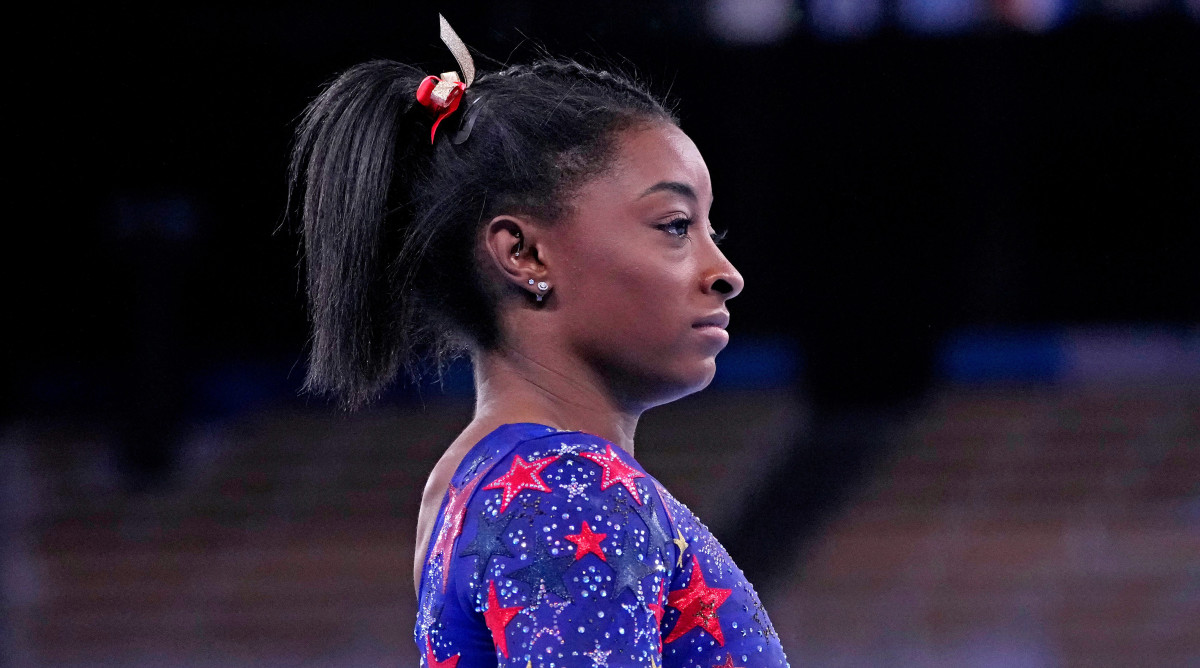Former Gymnasts Left Paralyzed Are No Stranger to the Struggles Biles Faced

Sign up for our free daily Olympics newsletter: Very Olympic Today. You'll catch up on the top stories, smaller events, things you may have missed while you were sleeping and links to the best writing from SI’s reporters on the ground in Tokyo.
TOKYO — When Simone Biles withdrew last week from the women’s gymnastics team competition at the Olympics, most of the world reacted with shock. Jacoby Miles felt only relief.
She recognized the look in Biles’s eyes as she bailed on her vault, stopping earlier than she meant to and only barely landing safely. Biles would later say she had suffered from the twisties, a form of gymnastics yips that leaves its sufferers feeling lost in the air.
Miles, 23, recognized that look because she had felt it, too. She, too, had experienced the twisties. She, too, had bailed on a skill, stopping earlier than she meant to. But she didn’t land safely. Miles fell on her neck. She is paralyzed from the chest down.
“She was brave enough and strong enough, even though it was the Olympic stage, to say, No, for my own safety, physical and mental health, I'm going to step out and make this decision,” Miles says. “I thought [it] was just really, really smart on her part.”

The conversation around Biles’s decision has mostly centered on mental health. But she saved herself from enormous physical risk. A gymnast who loses concentration, spatial awareness or confidence might never walk again.
Miles was a high-level 15-year-old gymnast when she began noticing that she sometimes struggled to sense where she was on double backflips. You’ll be fine, she told herself. This is just a phase. She had successfully performed a double backflip dismount from the uneven bars “probably hundreds of times before,” she says, so on Nov. 16, 2012, she practiced it again. As her hands released the bar, though, she realized she had no idea where she was.
“That same exact thing that happened to Simone happened to me,” she says. “I got lost in the air.”
Miles could not complete the flip. She landed on her neck and dislocated her C4 vertebrae, instantly rendering her a quadriplegic. She has since regained some movement in her arms, and she graduated last year from Seattle Pacific, but she expects to be in a wheelchair for the rest of her life.
In retrospect, she regrets trying a skill that was giving her so much trouble. She did not have the vocabulary for what was happening to her. It took her years even to use the word twisties. She had suffered from versions of that confusion before. Most gymnasts have. In those cases, she had started over and relearned the elements. But she did not understand how dangerous the disorientation could be.
The sport can be perilous even for those who feel confident. In 1989, Adriana Duffy was competing for Puerto Rico at the world championships when she slipped while practicing her vault. She is mostly paralyzed from the chest down. So is Sang Lan, who fell on a vault during warm-ups while competing for China at the ’98 Goodwill Games. Soviet gymnast Elena Mukhina died from complications of the quadriplegia she suffered when she fell on her floor exercise while practicing two weeks before the ’80 Olympics. So did Julissa Gomez, of the U.S., after she slipped on a vault at the World Sports Fair in ’88. And Melanie Coleman, a gymnast at Southern Connecticut State, was killed when she fell off the uneven bars in 2019.
Those accidents were the result of physical errors. But they speak to the tiny gap between a successful routine and a devastating injury.
“I remember having a fear of twisting the wrong direction, which I didn’t ever actually do,” says Duffy, who now goes by Duffy-Hörling and is an attorney and a professor at Santa Clara’s law school. “But I remember feeling that quite a lot, that I would just go into the air and go the wrong way and then who knows what would happen.”
Duffy-Hörling’s fall was a freak accident. She was too far back on the vault, which at the time was a vaulting horse rather than today’s safer vaulting table, and her hand slipped off. She could not get enough height to complete her skill, and in the moment she worried that bailing out might put her in more danger. She landed on her neck.
“Getting lost in the air is very scary,” Duffy-Hörling says, “Because if you don't know where you are and you don't know where the floor is, really bad things could follow from that.”
Biles, who plans to compete in the balance beam competition on Tuesday, took a lot of flak for walking away from the other events. But gymnasts who know the horror of going the wrong way understand she went the right one.
More Olympics Coverage:
• Bright Future Ahead for U.S. Swimming After Tokyo
• It's Time to Appreciate the Olympic Legacy of Brittney Reese
• Caeleb Dressel's Picture-Perfect Tokyo Olympics
